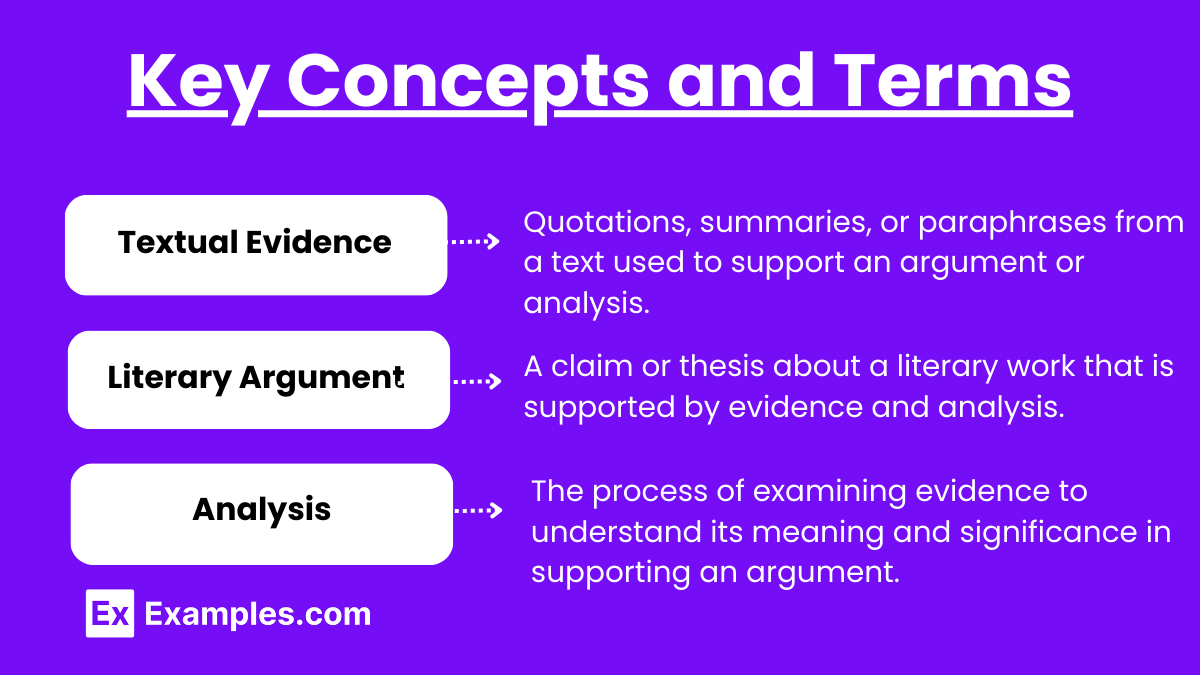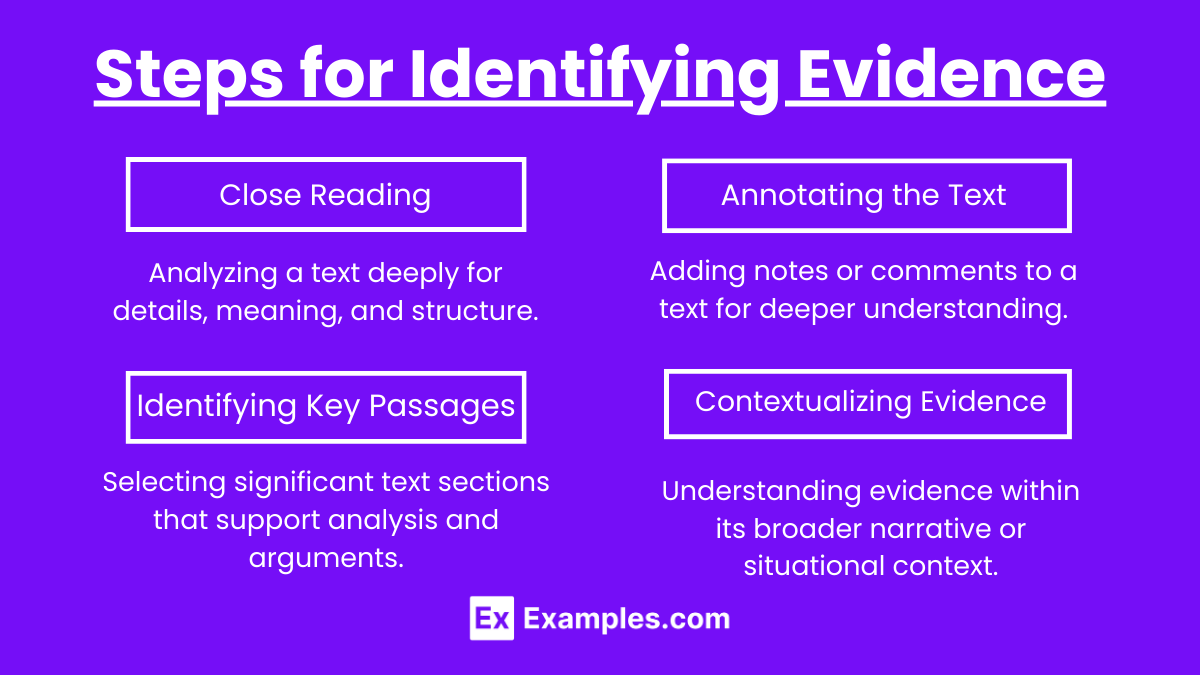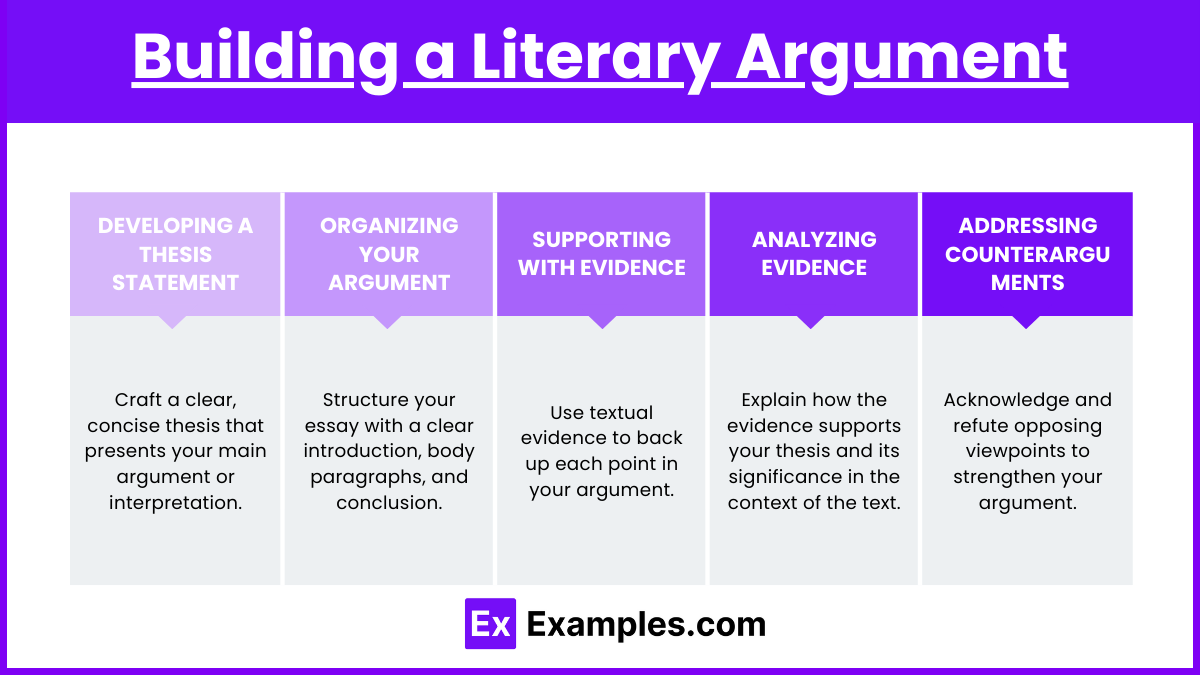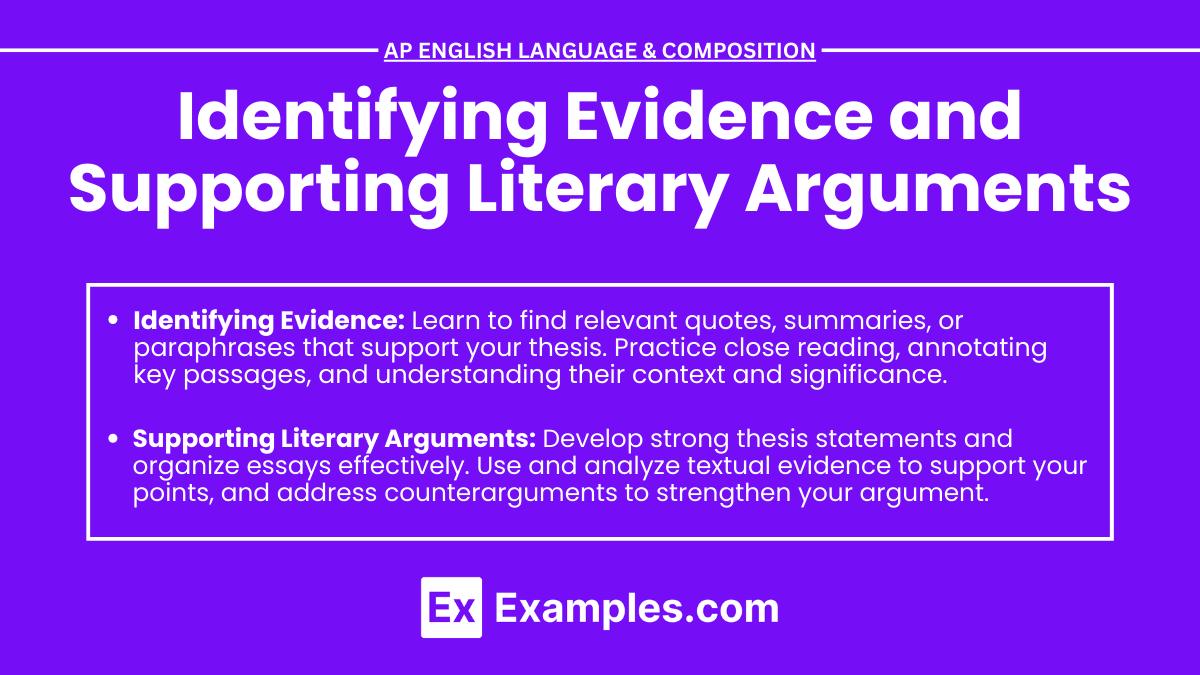In preparing for the AP English Language and Composition exam, mastering the skills of identifying evidence and supporting literary arguments is essential for effective argumentative writing and argumentative speech. By crafting rhetorical sentences and cumulative sentences, students can enhance the depth and clarity of their analyses. These skills enable students to construct compelling arguments, backed by textual evidence, and develop strong, persuasive essays. The ability to critically analyze texts and present well-supported interpretations is fundamental to success in both the multiple-choice and free-response sections of the exam.
Learning Objectives
In studying the identification of evidence and support of literary arguments for the AP English Language and Composition exam, students will learn to construct cumulative sentences that build complexity and depth in their analysis. They will develop the skills to write both explanatory essays that elucidate the significance of textual evidence and expository essays that provide clear, structured arguments. By incorporating rhetorical sentences, students will enhance the persuasiveness of their writing. Crafting a final thesis statement that encapsulates their argument will hone their ability to present coherent and focused analyses. This process will foster critical thinking skills, enabling students to engage deeply with literary texts and support their interpretations with solid evidence.
Key Concepts and Terms

- Textual Evidence: Quotations, summaries, or paraphrases from a text used to support an argument or analysis.
- Literary Argument: A claim or thesis about a literary work that is supported by evidence and analysis.
- Analysis: The process of examining evidence to understand its meaning and significance in supporting an argument.
Steps for Identifying Evidence

- Close Reading: Carefully read the text to identify important details, themes, and literary devices.
- Example: Noting the use of imagery in a poem to convey emotions.
- Annotating the Text: Highlight or underline key passages and make notes in the margins about their significance.
- Example: Annotating a novel to highlight examples of character development.
- Identifying Key Passages: Select passages that directly support your thesis or main argument.
- Example: Choosing a quote that illustrates the protagonist’s internal conflict.
- Contextualizing Evidence: Understand the context of the evidence within the larger narrative or argument.
- Example: Explaining how a specific event in the plot contributes to the overall theme.
Building a Literary Argument

- Developing a Thesis Statement: Craft a clear, concise thesis that presents your main argument or interpretation.
- Example: “In ‘The Great Gatsby,’ F. Scott Fitzgerald uses the green light to symbolize Gatsby’s unattainable dreams and the broader theme of the American Dream.”
- Organizing Your Argument: Structure your essay with a clear introduction, body paragraphs, and conclusion.
- Example: An essay on “To Kill a Mockingbird” might be organized by themes such as racial injustice, moral growth, and empathy.
- Supporting with Evidence: Use textual evidence to back up each point in your argument.
- Example: Using quotes from Atticus Finch to support an argument about his moral integrity.
- Analyzing Evidence: Explain how the evidence supports your thesis and its significance in the context of the text.
- Example: Analyzing a passage from “1984” to discuss how Orwell critiques totalitarianism.
- Addressing Counterarguments: Acknowledge and refute opposing viewpoints to strengthen your argument.
- Example: Addressing potential criticisms of your interpretation of a character’s motivations.
Examples
Example 1: “The Great Gatsby”
- Thesis Statement: “In ‘The Great Gatsby,’ F. Scott Fitzgerald uses the green light to symbolize Gatsby’s unattainable dreams and the broader theme of the American Dream.”
- Textual Evidence: “Gatsby believed in the green light, the orgastic future that year by year recedes before us” (Fitzgerald).
- Analysis: This quote illustrates Gatsby’s perpetual hope and the elusive nature of his dreams, reflecting the unattainable American Dream.
Example 2: “To Kill a Mockingbird”
- Thesis Statement: “Harper Lee’s ‘To Kill a Mockingbird’ explores the theme of moral growth through the character of Scout Finch.”
- Textual Evidence: “You never really understand a person until you consider things from his point of view… until you climb into his skin and walk around in it” (Lee).
- Analysis: This advice from Atticus Finch encapsulates the novel’s theme of empathy and understanding, illustrating Scout’s journey towards moral maturity.


